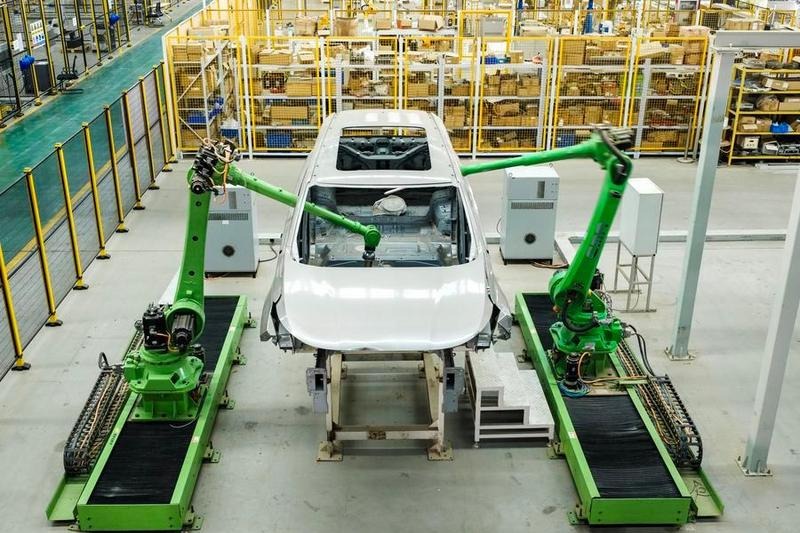Retro style meets modern design

Home renovation project seeks to keep Kashgar's rich, unique heritage intact
Xianu Mijit's house is an intriguing mix of old and new.
Rebuilt and refurbished, the home in the center of the old town district of Kashgar in the Xinjiang Uygur autonomous region is decorated in traditional Uygur style, but also features an electronic sliding glass roof and a garage, installed at the family's request.
Though there is a natural gas connection, the family has retained the old fireplace, one of the original features of the house, built more than 90 years ago.
"Our old house needed to be renovated sooner or later because it had become very fragile over the years," says Xianu, 49, sitting in front of the old fireplace where the white paint has an intentionally worn look.
Last June, the nurse and her doctor husband moved back to the house in Artux alley, Kumudarwazha street, in which they were married 29 years ago.
After they moved out temporarily in 2009, the building was torn down and rebuilt as part of a pilot program to renovate Kashgar's old town.
The project was controversial, triggering concern about whether it would destroy the Uygur features of the neighborhood. The 4-square kilometer area has a history of more than 2,000 years and is home to more than 126,800 people.
Funded by the central government, the project, which has a budget of more than 7 billion yuan ($1.1 billion; 810 million euros), aims to transform the decrepit houses and render them earthquake-proof. Work began officially in 2010 and is due to be completed this year and is expected to benefit more than 49,000 households. Most of the residents have gradually moved back to the "new" old town since last September to continue their traditional lives, albeit with a modern twist.
Like most of the dwellings in the area, Xianu's old house was made of mud and wood, and lacked proper sewerage. "Every alley had a hole in the ground where people could dump their wastewater at night," she says, holding her nose with her fingers to indicate the smell she was forced to tolerate back then.
Her "new" house, which is made of bricks and mortar, has sewerage, running water and natural gas.
"Although the house is modern, we made sure everything is as Uygur as possible. It's something that can't be taken away from us, so other people shouldn't be concerned," she says, proudly showing off the wooden pillars on the second floor of the house, carved and embellished in the traditional style with complicated patterns by local craftspeople.
Like many residents keen to preserve the look of the old mud houses, the family has smeared mud on the external brick walls to give the impression of a house from days gone by.
"Of course we were emotionally very attached to the old house, but we wanted a better, safer life too," Xianu says. One of the few things she regrets, she says, was laying floor tiles to cover the courtyard, where her late mother-in-law enjoyed gardening, to transform it into a living space.
"Every house was individually designed to cater to individual families' needs, then rebuilt or reinforced accordingly. That made this a huge and complicated project from the very beginning," says Remet Aji, the 32-year old Party chief of Kumudarwazha community.
Memetimin Asar's two-story house stands just across the street from Xianu's. His property is among 93 houses that needed no renovation because an architect's survey showed them to be safe for habitation. However, in Memetimin's case, that was because he had already had work done on the house.
In the courtyard of the 137-year-old house, the leaves of the mulberry and fig trees planted by the 73-year-old tailor's grandfather were covered by a fine layer of dust raised by the nearby construction work, but they are still growing strongly. "There have been a lot of changes outside, but nothing has changed inside," Memetimin says.
Despite the construction work, visitors are still liable to feel as though they are being sucked into a giant maze when they step into the old town surrounding the biggest mosque in China, the Id Kah. The old streets are being widened to allow access for fire engines and emergency vehicles, but apart from that, they retain their original labyrinthine features.
Now that the streets have been widened, cars and electric motorcycles have become the most common means of transport in the old town, but some residents still prefer to use carriages drawn by horses with bells hanging from their necks. Although the carriages are banned on Kashgar's main streets, they have long provided a convenient shuttle service between the bazaars and are just as fast as modern means of transport.
The yellow blocks of houses, all newly decorated with painted window frames, stand in stark contrast to the rest of Kashgar, which has become increasingly modern since the central government decided to turn the city into a special economic zone.
cuijia@chinadaily.com.cn
|
A bird's-eye view of the old town area of Kashgar. Feng Yongbin / China Daily |
(China Daily Africa Weekly 05/09/2014 page16)
Today's Top News
- Xi hears report from Macao SAR chief executive
- Xi hears report from HKSAR chief executive
- UN envoy calls on Japan to retract Taiwan comments
- Innovation to give edge in frontier sectors
- Sanctions on Japan's former senior official announced
- Xi stresses importance of raising minors' moral standards































